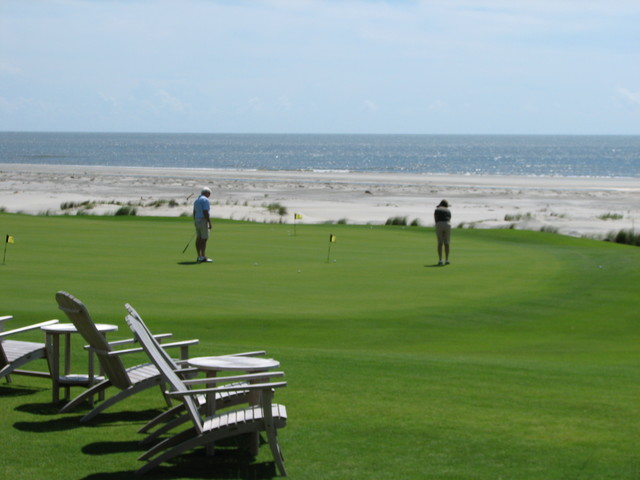
Kiawah Island
Prior to 1699 when pirate George Raynor was given title to Kiawah by the Lords Proprietors the island had been inhabited by the Kiawah Indians. Mr. Raynor’s family owned the entire island until 1719, when it was purchased by Mr. John Stanyarne.
Over the next 50 years, Kiawah was passed down through Stanyarne family and then to the Vanderhorst family. General Arnoldus Vanderhorst, a Revolutionary War hero and twice mayor of Charleston, built his home which still exists on the eastern half of the Island in 1802. At about the same time, South Carolina’s first British Consul, James Schoolbred, acquired the western half of the Island. The Vanderhorsts, who produced sea island cotton on the island until the outbreak of the Civil War, acquired the Schoolbred portion of the island in the late 19th century and continued to own the island until 1951 when C.C. Royal, a lumberman, purchased it for $125,000. Just 23 years later, his heirs sold the same piece of property to a group of Kuwaiti investors for $18.2 million. In 1974, the land was developed into a world-class resort and residential community. In 1993, the current owners purchased the portions of Kiawah Island that comprise the Resort. In 2004, The Sanctuary a Mobil Four Star resort at Kiawah Island opened its doors.
Kiawah Island incorporated as a town in 1988 and operates as a Mayor-Council form of government. The Town takes an active role in managing the natural resources on the island. Wildlife management is handled in part by a full-time wildlife biologist in cooperation with the Town’s Environmental Committee, the South Carolina Department of Natural Resources and other island entities. The Town supports research projects and programs in order to better understand and manage the wildlife species – deer, bobcats, osprey, raccoons, gray foxes, river otters and others – that live on the island.
The island is tightly controlled by an architectural review board comprised of property owners who have a strong commitment in maintaining Kiawah’s natural habitats. The island is a private gated community and guests must make arrangements for access prior to arrival or be accompanied by a resident.
Seabrook Island
Discovered in 1666 by English Colonel Robert Sanford, this incredibly beautiful island boasts three and one half miles of Atlantic shoreline and another mile of sandy beach along the North Edisto River. An incorporated town of mostly full-time residents, Seabrook is also known for its 2200 acres of lush maritime forest and beautiful salt marshes.
Seabrook was originally known as Jones Island and was home to several rice and indigo plantations. In 1753 the island was renamed Simmons Island by the new owner, Ebenezer Simmons, whose grandson began cultivating Sea Island cotton. A subsequent owner, William Seabrook, renamed the island for his family in 1816. Ownership changed several times after 1816 and in the first half of the 20th century Seabrook became a hunting retreat for the Morawetz family who gave it to the children of the Episcopal Diocese of South Carolina in the 1950’s. The diocese retains a large portion of the island where it operates the St. Christopher Camp and Conference Center.
Sensitive development of the island has ensured that the island’s pristine beaches, scenic tidal marshes, meandering creeks and wooded trails have not been overpowered by the built environment. Recently, the Club at Seabrook Island’s golf courses achieved the distinction of becoming South Carolina’s first “Fully Certified Audubon Cooperative Sanctuary”. The island is a private gated community and guests must make arrangements for access prior to arrival or be accompanied by a resident.
Charleston Communities
